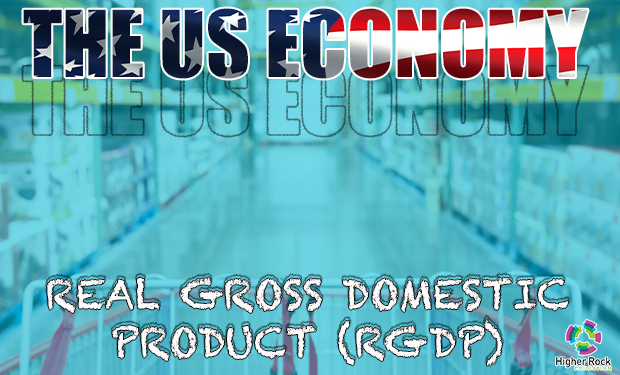
Consumers defied rising prices and gloomy economic forecasts by going on a spending spree at the fastest pace in almost two years. An annual 4.9% increase in RGDP also reversed a trend of three consecutive quarters of deceleration. However, economists expect many recent developments will curtail growth in the fourth quarter.
The news on inflation was mixed. The all-inclusive PCE price index accelerated, but the core price index fell. Economists and policymakers at the Federal Reserve pay close attention to the core index because it is more reliable at predicting trends.

The Bureau of Economic Analysis’s news release and report can be accessed at Gross Domestic Product, Third Quarter 2023 (Advance Estimate). Here are the report’s highlights.
The table below lists the contribution of each component of RGDP to the growth rate.

Consumers did not hold back on purchasing goods and services. Consumers spent 4.8% more on goods in the third quarter. That compares to a 0.5% increase in the second quarter. Large ticket items such as motor vehicles were the big winners. People also purchased experiences and spent significantly more on services, where service expenditures rose 3.6%, aided by Taylor Swift and Beyoncé concerts and blockbusters Barbie and Oppenheimer added approximately $8.5 billion to the economy. (Bloomberg, August 24, 2023)
A strong labor market supported much of last quarter’s growth. Payrolls continued to expand, and wage growth exceeded inflation in the second quarter. People saved less and borrowed more. The savings rate has dropped to the lowest since the fourth quarter of 2022. FRED Personal Savings Rate Meanwhile, consumer debt has steadily increased since the first quarter of 2021. FRED Large Bank Credit Consumer Credit Card Balances. Why not spend more? Workers felt secure in their jobs because the unemployment rate hovered near record lows. Up until recently, incomes have grown faster than the price level. The Federal Reserve reported that the net worth of a typical American household grew 37% after inflation between 2019 and 2022. An appreciation of home and stock values contributed to the increase. Changes in U.S. Family Finances from 2019 to 2022.
However, disposable income failed to keep pace with inflation in the third quarter. Real disposable income fell 1.0%, compared to a 3.5% increase in the second quarter. That trend is likely to continue. Beginning October 1st, approximately 28 million borrowers will be required to resume payments on their student loans for the first time since they were paused during the pandemic. Higher gasoline prices will also eat into many family budgets.
Gross private domestic investment increased at an annual rate of 8.4% during the third quarter. That was the largest increase since the fourth quarter of 2021. Much of the increase resulted from businesses stockpiling inventories. Growth in inventories accounted for 1.3% of the quarter’s growth rate, an unsustainable rate. A significant jump in inventories can slow future growth if businesses curtail production to deplete their inventories.
Residential investment increased for the first time since the beginning of 2021. High mortgage rates have slowed residential purchases, but they have also reduced the number of existing homes on the market. Many homeowners choose to remain in their home with a low-interest loan rather than purchase a new home financed by a high-interest rate mortgage. Existing home sales are down 15.4% from a year ago, while the inventory of existing homes for sale is 8.1% lower than a year ago. (National Association of Realtors) Given the shortage of existing homes, more buyers are turning to new homes for their purchase. (Economists do not include the sale of an existing home in RGDP because it was included when it was first sold. RGDP includes sales of new homes.)
Higher interest rates have also contributed to slowing business investment in equipment. Equipment sales contracted 3.8% during the third quarter. The 10-year treasury reached its highest yield in 16 years. Many lenders tie their rates to the 10-year treasury. High long-term rates will detract many businesses from purchasing equipment or expanding their operations.
Government investment grew 4.6% in the third quarter. Much of the increase was in federal national defense, where the government restocked the inventory of weapons it supplied to Ukraine.
Other developments that could impede the economy include a possible government shutdown, the wars in Ukraine and the Middle East, and prolonged labor strikes.
In March 2022, policymakers at the Federal Reserve embarked on a long and challenging path to tame inflation after the PCE price index peaked at 7.7% in the first quarter of 2022. (Policymakers prefer the PCE price index to the more publicized consumer price index.) They raised their benchmark rate eleven times from nearly 0% to over 5.25%. Their objective was to cool the economy’s aggregate demand and its growth. It takes time for the rate increases to filter throughout the economy. There is much evidence that higher rates are working despite a surge in growth. Lower real wages, less disposable income, and depleted savings should slow the growth of consumer spending next quarter. Much of the increase in business investment was because businesses expanded their inventories, a trend that is not sustainable.
Inflation is approaching the Fed’s 2% target, but it remains a problem. Higher gasoline prices pushed the overall inflation rate higher in the third quarter. Meanwhile, the core index continued to fall. Most economists expect policymakers to take a wait-and-see attitude and leave rates unchanged when they meet later this week. The BEA’s Personal Income and Outlays - September 2023 report was released Friday. Disposable income fell in September while spending rose. Read Higher Rock’s summary and analysis of the news in tomorrow’s blog.